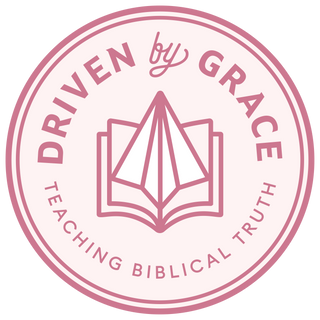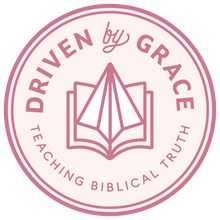How to Study the Bible Using the Inductive Bible Study Method
How to Study the Bible Using the
Inductive Bible Study Method
Learning to study the Bible properly has completely transformed my mornings in God’s Word. When I was a new believer, I used to open my Bible, read a passage, and immediately jump to the question: “How does this apply to me?” While Scripture certainly applies to our lives, it’s important to remember that it was first written to real people living in real times and places.
Once I realized that and learned how to study using the inductive Bible study method, my eyes were opened, and my excitement for Scripture grew tremendously. This approach invites us to slow down and read with care, so we can see what God is truly communicating through His Word. It helps us understand what the authors (inspired by the Holy Spirit) meant for their original audience before we apply those truths to our own lives today.
If you’ve ever longed to go deeper in your Bible reading but weren’t sure where to start, the inductive Bible study method is a wonderful place to begin.
What Is the Inductive Bible Study Method?
The inductive Bible study method is a way of studying Scripture that starts with observation before interpretation and finally moves to application. Instead of beginning with our own assumptions or questions, it teaches us to first ask: “What does the text say?” and “What did it mean to the original audience?”
This approach helps us build a solid foundation for understanding God’s Word as it was intended without rushing ahead or taking verses out of context.

Let’s walk through the four main steps:
Step 1: Understand the Context
Before you study any passage, start by understanding the background of the book or letter you’re reading. A good study Bible or commentary can help here.
Ask questions like:
-
Who wrote this book or passage?
-
To whom was it written?
-
When was it written?
-
Where was the original audience located?
-
Why was this book or letter written: what purpose or problem was it addressing?
When you understand the historical and cultural context, Scripture comes alive! You begin to see more than words on a page. You get to see the living story of God’s faithfulness unfolding throughout history.
Step 2: Observe What the Passage Says
In this step, you’re gathering information. Read the passage slowly—more than once—and take note of everything you see.
Try this:
-
Mark repeated words or phrases.
-
Note comparisons, contrasts, lists, and any commands.
-
Watch for figures of speech or imagery.
-
Look up unfamiliar words.
-
Read in multiple translations to gain clarity.
At this stage, resist the urge to interpret. Your goal is simply to see what’s there. Observation is simply paying attention to details you might otherwise overlook. For this step, it is helpful to print out the passage you are studying so you can underline and highlight without messing up your Bible. You can download printable copies at BibleGateway.com.

Step 3: Interpret What It Meant to the Original Audience
Once you’ve gathered your observations, begin to interpret.
Ask:
-
What truth did the author want the original audience to understand and live out?
-
How does this passage connect to Jesus and the larger gospel story?
-
What differences exist between the original audience and us today (culture, time, persecution, etc.)?
Remember: Old Testament readers didn’t yet have the full revelation of Christ. But as New Testament believers, we can now see how every page of Scripture points to Him.
Step 4: Apply the Truth to Your Life
Only after we’ve carefully observed and interpreted can we move to application. This is where Scripture becomes personal and transformative.
Ask yourself:
-
How should my life look different because of this passage?
-
What truth should I believe, value, or obey?
-
How does this connect to Jesus and the gospel?
-
What would it look like for me to live this out in my thoughts, actions, and relationships this week?
Application is where the Word takes root in our hearts. But remember—true application flows from accurate understanding. The more faithful we are to the text, the more powerfully it will shape our lives.
Why the Inductive Bible Study Method Matters
We live in a fast-paced world that often encourages quick devotionals and surface-level takeaways. But when we slow down to study God’s Word inductively, we begin to see the richness of Scripture including the patterns, promises, and connections that reveal His character and plan.
The inductive Bible study method helps us approach God’s Word with reverence and curiosity and reminds us that the Bible isn’t about us—it’s about our good Father. And as we come to know Him more deeply through His Word, we can’t help but be transformed.
A Tool to Help You Get Started
If you’re ready to begin studying this way, I designed a tool to help guide your process—the Bible Study Notebook.
It’s laid out to walk you through each step of the inductive Bible study method: recording context, observations, interpretations, and applications. Whether you’re studying alone in the quiet of your morning or leading a group, it’s a beautiful way to keep your insights organized and your heart focused on the Word.
Final Thoughts
The goal of Bible study is to know God. As you begin practicing the inductive Bible study method, you’ll find that Scripture starts to read you as much as you read it.
Slow down, study carefully, and let God’s Word speak for itself.
Additional Bible Study Tools to help you on your journey:
1. ESV Study Bible
This study Bible is great to give you background info and context for each book of the Bible.
2. Women of the Word by Jen Wilkin
This is a great book for new Bible readers who are still trying to grasp proper Bible study. This book opened my eyes by helping me understand how to properly study God’s Word. More importantly, it rekindled my wonder for the Bible.
3. Grasping God's Word by J. Scott Duvall and J. Daniel Hays
This is a great textbook for those of you who are eager to go deeper with tools for using the inductive Bible study method.
*Please note: Some links are affiliate links that provide a small commission to me at no additional expense to you. I appreciate you shopping through the links to support the efforts behind Driven By Grace — thank you!










